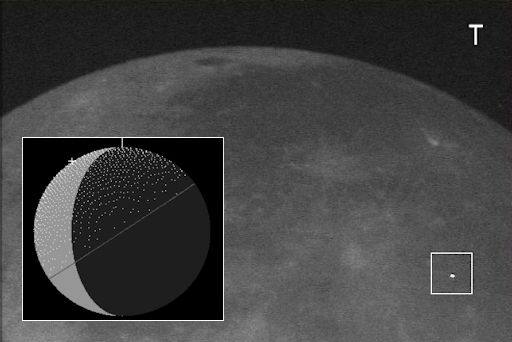METEOR SHOWER ALERT:
Next weekend, Earth will pass through a stream of debris from Comet 209P/LINEAR. The encounter could spark a new meteor shower. Forecasters aren't sure how many meteors will appear; anything is possible from a complete dud to a magnificent meteor storm. Best estimates fall between 30 and 200 meteors per hour on May 24th between 0600 UT and 0800 UT on May 24th. Get the full story from Science@NASA
Published on May 5, 2014
Visit http://science.nasa.gov/science-news/... for more.
Sky
watchers in North America could witness a new meteor shower on May 24th
when, for the first time, Earth passes through a cloud of dust from
periodic comet 209P/LINEAR......
NEW METEOR SHOWER ON EARTH AND THE MOON:
Anticipation
is building as Earth approaches a cloud of debris from Comet
209P/LINEAR. This weekend, meteoroids hitting Earth's atmosphere could
produce a never-before-seen shower called the "May Camelopardalids"
peaking with as many as 200 meteors per hour. The best time to look is
on Saturday, May 24th, between 0600 UT and 0800 UT (2 a.m. and 4 a.m.
EDT).
Earth won't be the only body passing through
the debris zone. The Moon will be, too. Meteoroids hitting the lunar
surface could produce explosions visible through backyard telescopes on Earth. The inset in this picture of an actual lunar meteor shows the region of the crescent Moon on May 24th that could be pelted by May Camelopardalids:

According
to NASA's Meteoroid Environment Office, the best time for amateur
astronomers to scan the Moon for lunar meteors is after 0800 UT (4 a.m.
EDT) on May 24th.
There is much uncertainty about the
strength of this shower, both on Earth and on the Moon. In recent
history, our planet has never passed directly through a debris stream
from Comet 209P/LINEAR, so no one knows exactly how much comet dust lies
ahead. A magnificent meteor shower could erupt, with streaks of light
in terrestrial skies and sparkling explosions on the Moon--or it could
be a complete dud. Stay tuned!
Meteors streak from the Perseids meteor shower above the Wyoming countryside north of Cheyenne in this time-elapsed photo taken Aug. 13, 2013.(Photo: Blaline McCartney, AP)
The Camelopardalid meteor shower is a first because Earth has never run into the debris from this particular comet.
The Comet 209P/LINEAR is a very dim comet that orbits the sun every five years and was discovered in 2004.
MORE: New meteor shower could turn into meteor storm
Unlike other meteor showers expected to be visible around the same time of year, the Camelopardalid is unique because its debris is strongly influenced by Jupiter's gravity, which constantly alters the orbit of this comet's debris, said William Cooke, head of the Meteoroid Environment Office at NASA's Marshall Space Flight Center.
Read More Here
,,,,,






No comments:
Post a Comment
Hello and thank you for visiting my blog. Please share your thoughts and leave a comment :)